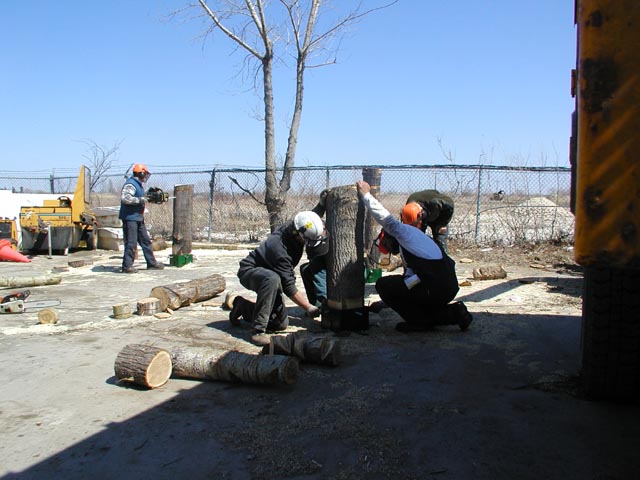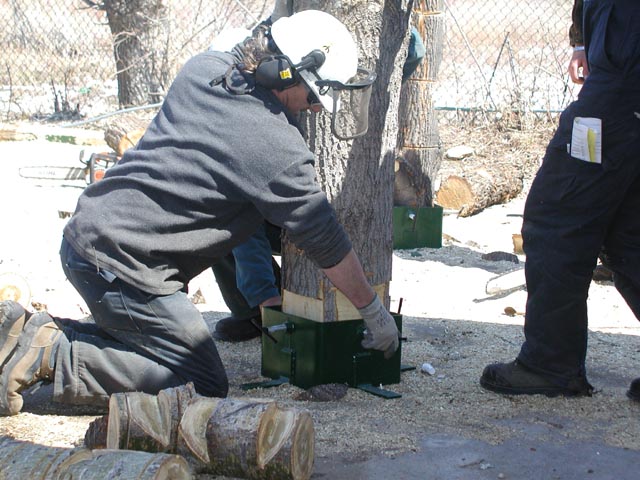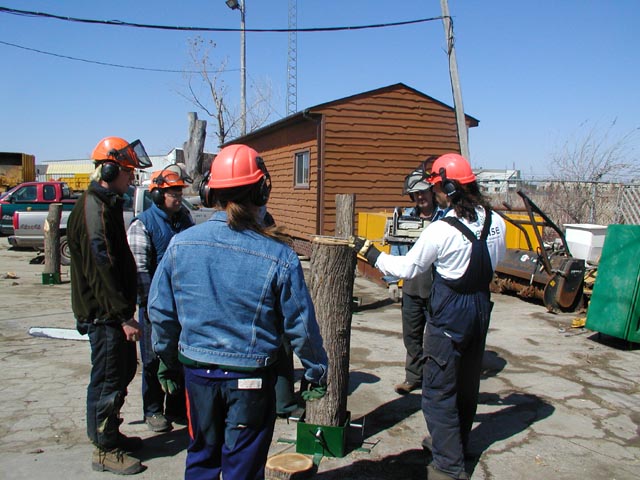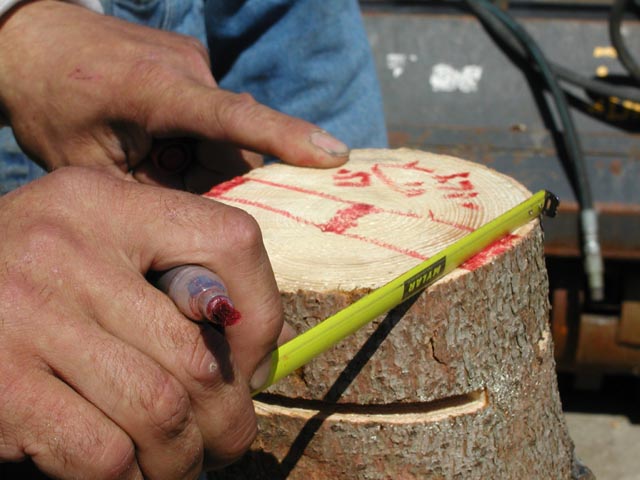
|
Next, the students move outside
After the classroom education is completed, students move outside to practice the notches they learned about in theory in the classroom. Students have several hours to practice outside ? sometimes making dozens of cuts over the duration of the course. At the conclusion of the course, Dave assesses each student?s overall skill level. Students are awarded a designation based on their proficiency with a chainsaw and the quality of their notches. Cuts must be completed according to specifications dictated by the AWTA.
Courses can range from a four-hour awareness session to a five-day instructor-level program. The course content and agenda can be tailored according to the employer?s needs, the employer?s industry, the municipality in which the employer is located, the band office (if an INAC group), etc. For any course involving hands-on practice, a maximum of eight students is allowed per course-offering thus ensuring each student has ample opportunity to work one-on-one with Dave to hone their skill.
A one-day general awareness course may be appropriate for novices or those such as residential home- or cottage-owners who do not expect to make significant use of their chainsaw, but who want to learn how to properly use and maintain this powerful piece of equipment. This type of course may be conducted in a larger classroom-setting or in a hardware store, for example, where the chainsaw?s component parts, its proper carrying-style, its required maintenance, and the basics of its safe use are covered in an interactive, participative, fun setting.
At the discretion of Dave and his client, a hands-on course may be expanded from two to three or more days to allow students to practice their notches by felling actual standing-timber in a forest setting. Performance is based on how accurately the student fells the tree in an appointed location. This in-the-woods hands-on portion of the course is done after the students have satisfactorily completed their cuts in a controlled setting (which is usually on the client?s property in close proximity to the classroom where the theoretical material was covered).
Each student participating in the controlled-setting portion of a hands-on course is provided with a specially constructed tree-stand to hold a bolt of wood for them to work with. Each stand holds securely in-place an approximately-5-foot-tall log, thus allowing the student to focus his efforts on accurately cutting the wood without concern for the wood falling over.
 |
| It?s quick and easy for a student to practice a large number of notches. He/she just places a bolt of wood in the specially-designed stand |
 |
| After placing one end of the log into the stand, just tighten the bolts at the bottom to hold the log securely in place |
 |
| Before beginning their cuts, students gather for a recap of what they learned in the classroom: Dave explains the notches each person must cut and how those cuts will be scored, including the imperfections that will result in a deduction. The ?basic chainsaw safety? designation is achieved only if a student?s notches meet the AWTA?s minimum standard |
 |
| Dave gives the students a tip on how to accurately assess the required depth of their cuts |